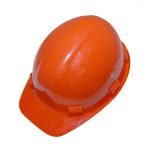It is common in personal injury cases for defendants to try to avoid liability by pointing fingers at each other. In premises liability cases, there are often vendors that are contractually responsible for maintaining certain areas of the premises. The property owner and vendor often blame each other for the plaintiff’s injuries, as in the recent case of Solomon v. Barnes & Noble, Inc.
 The plaintiff was injured on an escalator at a Barnes & Noble store. The 21-month-old child and his nanny were riding the escalator when the child sat down and then screamed. The nanny stated she held the child’s right hand while they were on the escalator, but when he sat down, his left hand got stuck between the step and the side wall of the escalator. An employee of the store stopped the escalator, and a maintenance worker freed the child’s hand using a wrench.
The plaintiff was injured on an escalator at a Barnes & Noble store. The 21-month-old child and his nanny were riding the escalator when the child sat down and then screamed. The nanny stated she held the child’s right hand while they were on the escalator, but when he sat down, his left hand got stuck between the step and the side wall of the escalator. An employee of the store stopped the escalator, and a maintenance worker freed the child’s hand using a wrench.
The Department of Buildings issued a violation for the escalator, finding too much space between the step and the side wall. It also issued a “cease use” order.
The procedural history of this case is somewhat complex. The plaintiff apparently filed suit against both Barnes & Noble and Otis Elevator Company. Barnes & Noble filed a cross-claim against Otis Elevator Company for indemnification. Otis Elevator Company filed a third-party claim against the nanny.
Barnes & Noble moved for summary judgment on the cross-claim against Otis Elevator Company, arguing that its maintenance contract required Otis to indemnify it. The court found that the contract did not contain a provision for contractual indemnity, but it went on to consider whether common law indemnity applied.
A party that participated in the wrongdoing is not entitled to common law indemnification, which is based on vicarious liability. The party seeking indemnity must also show that the indemnifying party was responsible for some negligence that contributed to the accident.
Barnes & Noble argued the contract granted Otis the exclusive right and obligation to maintain the escalator, including handling the repair and replacement of the steps, treads, step wheels, step chains, and tracks. The court found that Barnes & Noble made the prima facie showing and that the burden shifted to Otis to raise issues of fact.
Otis argued that Barnes & Noble also had responsibilities related to the escalator, including maintaining warnings, ensuring compliance with applicable codes, monitoring the escalators, and notifying Otis of any dangerous conditions. Otis further argued that Barnes & Noble was responsible for installing or arranging the installation of new equipment, including brush guards. The plaintiff’s expert found that brush guards would have prevented the accident, and Otis argued that the plaintiff’s expert’s conclusion required a finding that Barnes & Noble was liable.
The court found that Otis had raised triable issues of fact as to whether Barnes & Noble’s alleged negligence contributed to the accident, and Barnes & Noble was not entitled to summary judgment for either contractual or common law indemnity.
The court noted that the cause of the accident was unclear because it had not been shown whether the excessive skirt clearance was the result of a failure to maintain the escalator or whether it was caused by the wrench that was used to free the child’s hand. Furthermore, there was a factual question as to whether Barnes & Noble should have installed brush guards. The court also noted that a jury could find that Barnes & Noble or the nanny’s actions were the proximate cause of the accident.
Otis also moved for summary judgment on the grounds that the nanny was the sole proximate cause of the accident. Otis alleged that the nanny’s failure to properly supervise the child caused the accident and that she could have prevented the accident by keeping him from sitting on the escalator.
Otis’ service mechanic testified that he would have measured the clearance if he observed it to be abnormal and that he had found nothing wrong with the escalator during his inspections. He also testified that brush guards only provide warnings and could not have prevented the incident.
Otis’ expert stated in his affidavit that the escalator needed some clearance between the steps and the skirt to properly operate, so children should be closely supervised on the escalator. He concluded the boy’s hand could have been caught even if the clearance was in compliance with the code.
The court found that Otis met the burden of a prima facie showing, and the burden shifted to the plaintiff and nanny to raise a material issue of fact. The plaintiff argued that there were issues of fact as to whether the nanny was the sole proximate cause of the accident, whether the clearance was excessive before the accident, and whether Otis had taken proper steps to prevent an accident. The plaintiff argued that the nanny’s testimony stated she had held onto the child’s other hand while they were on the escalator.
The plaintiff also submitted an expert report that concluded the excessive clearance was not caused by the efforts to free the child’s hand. The expert also stated that brush guards could have prevented the accident by decreasing the clearance and deflecting the child’s hand from the clearance. He concluded that Otis was negligent in allowing the excessive skirt clearance and that the accident would not have occurred if the escalator had been properly maintained.
The nanny argued that her deposition testimony had been misrepresented and that she had not failed to pay attention to the child for a long period of time.
The court found that there were triable issues of fact and that the issues of negligence, foreseeability, and proximate cause were properly left to the jury. The court noted that the nanny had been holding onto one of the child’s hands. Her testimony indicated that his hand became stuck almost immediately after he sat down. The court found it improper to determine, at the summary judgment stage, that the nanny was the sole proximate cause, based on these facts. Additionally, the photograph of the warning sticker submitted with Otis’ motion showed an adult holding a child’s hand with one hand and the handrail with the other hand. The court noted that the warning sticker depicted a child with a free hand.
Finding that a jury could find that the wrench did not cause the excessive clearance and that Otis was negligent in inspecting, maintaining, and repairing the escalator, the court found there were triable issues of fact as to Otis’ negligence.
The court denied both defendants’ motions for summary judgment.
As this case shows, defendants in escalator accident cases often try to avoid liability by blaming each other. New York City personal injury attorney Nicolas Rose has the experience and knowledge to respond to summary judgment motions that place the blame on another defendant. If you have been hurt on someone else’s property as a result of their negligence, call 1-877-313-7673. The Law Offices of Nicholas Rose, PLLC offers free consultations.
Additional Resources:
Solomon v. Barnes & Noble, Inc., May 5, 2016, Supreme Court of the State of New York, Queens County
More Blog Entries:
New York Escalator Injury Risk and Footwear Liability, February 20. 2014, New York City Injury Lawyer Blog






